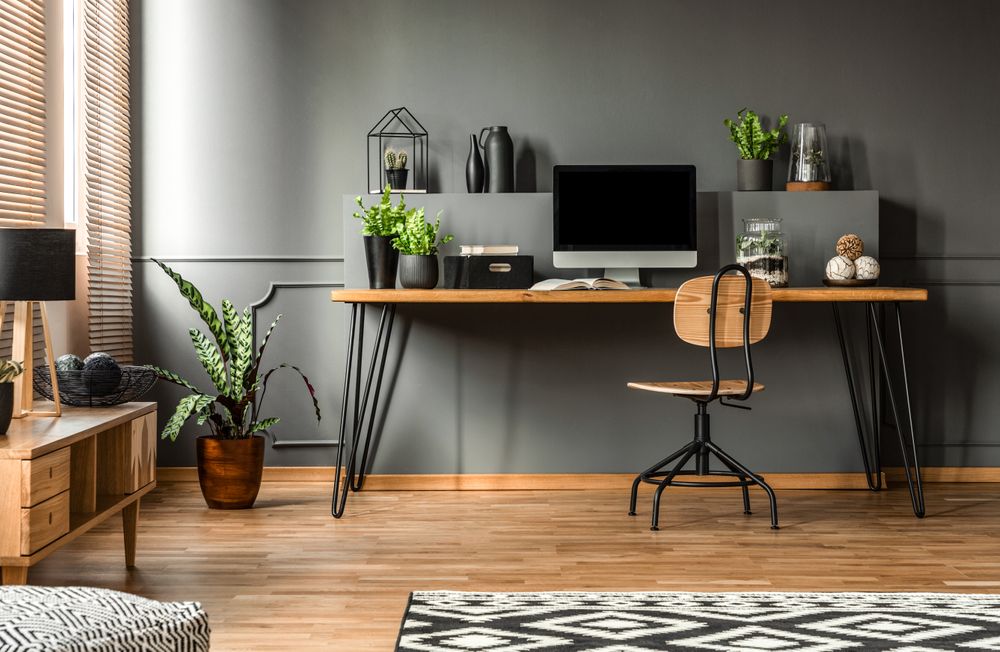Setting up an office isn’t just about throwing a desk and chair in a room and calling it a day. The way you design your workspace affects how you feel, how efficiently you work, and even your overall well-being. Whether it’s a home office or a professional setup, getting the essentials right makes all the difference.
Some things are non-negotiable—like a good chair—while others come down to personal preference. Let’s go through what really matters when creating an office that works for you.
1. Start With a Quality Executive Desk Chair
If there’s one thing you should splurge on, it’s your chair. A bad chair means back pain, stiff shoulders, and long days that feel even longer. You need something ergonomic that supports your posture, especially if you’re sitting for hours at a time.
Look for something adjustable so you can tweak the height, armrests, and lumbar support. Breathable materials like mesh help with airflow, while a sturdy base ensures durability. The goal? An executive desk chair that keeps you comfortable and pain-free, so you can focus on work instead of constantly shifting in your seat.
What to Look for When Buying Executive Chairs For Your Office
2. Get a Desk That Fits Your Workflow
Your desk isn’t just a surface—it’s your command center. Too small, and you’re crammed with clutter. Too big, and it dominates the space. The right desk depends on what you do.
If you’re mostly on a laptop, a sleek, minimal desk works fine. But if you juggle multiple screens, documents, and accessories, you’ll need more room. Adjustable standing desks are also worth considering if you like the flexibility of sitting and standing throughout the day.
And don’t forget storage. Built-in drawers, shelves, or even a filing cabinet can help keep things organized and prevent your workspace from turning into a mess of papers and cables.
3. Make Sure Your Lighting Works for You
Lighting is one of those things people often overlook—until they’re squinting at their screen or dealing with a headache. Natural light is best, so if possible, position your desk near a window. But since that’s not always an option, a combination of overhead lighting and a good desk lamp works well.
A soft, warm light is better than harsh fluorescent bulbs. If you’re staring at a screen all day, reducing glare and blue light exposure can also help prevent eye strain. Small adjustments here make a big difference in how comfortable your space feels.
4. Upgrade Your Screen Setup
If you’re only using one small monitor, you’re making life harder than it needs to be. A second monitor or an ultrawide screen makes multitasking way easier, reducing the need to switch between tabs constantly.
For those dealing with spreadsheets, design work, or research-heavy tasks, having extra screen real estate makes a huge difference. If you can, invest in a high-resolution display with adjustable brightness to reduce eye strain.
5. Invest in a Good Keyboard and Mouse
If you type all day, a basic keyboard won’t cut it. A mechanical keyboard feels better to type on, lasts longer, and reduces fatigue. The same goes for your mouse—an ergonomic design helps prevent wrist strain, especially if you’re working long hours.
Wireless options keep your desk clutter-free, and customizable shortcut buttons can speed up your workflow. Small upgrades like these might not seem like a big deal, but they improve comfort and efficiency more than you’d expect.
6. Stable, Fast Internet Is Non-Negotiable
There’s nothing more frustrating than a slow internet connection when you’re in the middle of a meeting or trying to get work done. If your Wi-Fi is unreliable, consider upgrading your router or using a wired connection for stability.
For those working with large files, video editing, or frequent calls, a high-speed connection is essential. And if you’re in a shared space, a Wi-Fi extender might be necessary to eliminate dead zones.
7. Keep Your Space Tidy with Cable Management
A cluttered workspace makes it harder to focus, and tangled cables are one of the biggest culprits. Use cable trays, clips, or even simple Velcro ties to keep cords out of the way. Wireless accessories also help minimize mess.
If you have multiple devices, a power strip with built-in surge protection keeps everything organized and safe. A clean desk equals a clear mind—small details like this make a big impact.
8. Block Out Distractions with Noise Control
Whether it’s a noisy household, office chatter, or construction outside, unwanted noise is a productivity killer. A good pair of noise-canceling headphones can help create a focused environment.
If you prefer a quieter space without wearing headphones all day, acoustic panels, rugs, and curtains can help absorb sound. Even soft furnishings like bookshelves can reduce echo and keep your office feeling cozy.
9. Add Personal Touches to Make It Your Own
Your office should feel like a space you enjoy spending time in. A few personal elements—like a framed photo, plants, or artwork—make it more inviting.
Plants not only look nice but improve air quality and boost mood. A cozy reading chair in the corner can give you a place to step away from the screen when needed. The goal is to create a space that’s functional but also inspiring.
10. Keep a Whiteboard or Notepad for Quick Ideas
Even if you do everything digitally, sometimes jotting something down by hand is just easier. A whiteboard is great for brainstorming, daily to-do lists, or reminders.
For those who prefer a more old-school approach, a good notepad on the desk helps capture thoughts without getting distracted by screens. Having a visual space for planning keeps things organized and ensures you don’t forget important tasks.
Create a Space That Works for You
Your office isn’t just about furniture—it’s about creating an environment that supports the way you work. The right chair keeps you comfortable, the right desk keeps you organized, and the right setup boosts efficiency.
With a few thoughtful choices, you can build a workspace that feels good, keeps distractions low, and helps you do your best work. Whether you’re starting from scratch or making improvements, investing in a well-designed office pays off every single day.



